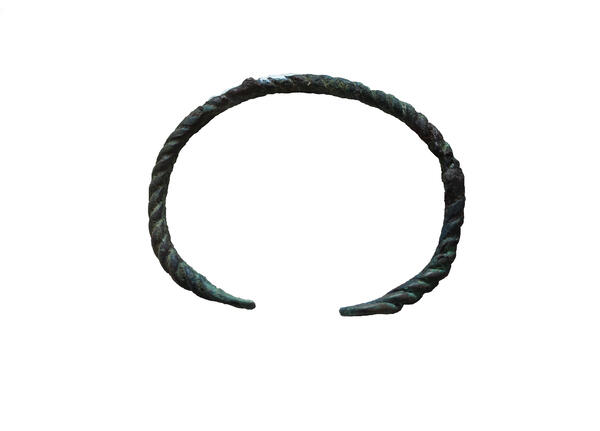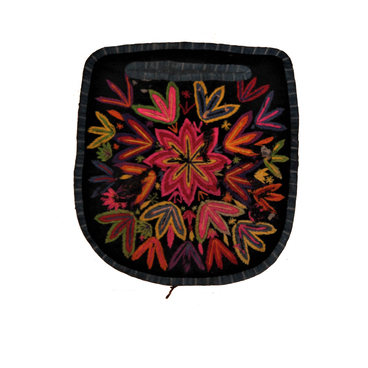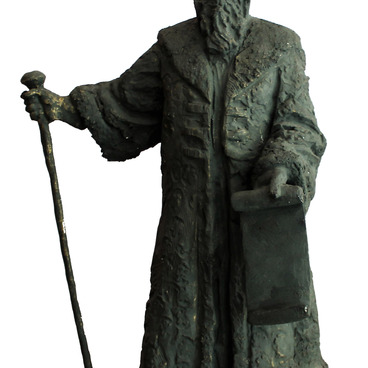The bronze bracelet was discovered by amateur local historians on the site of the excavation of a Mordovian burial ground from the 13th–15th centuries in Barboshina Polyana between 1916 and 1919. The discovery was handed to the Samara City Museum and then moved to the Syzran Museum of Local Lore in 1948.
Among archaeological landmarks of the Volga Region, the burial ground in Barboshina Polyana is the largest necropolis of the Golden Horde era located in the Samara course of the Volga River. Starting from 1907, numerous excavations have been carried out there. Since the 19th century, multiple parts of the burial ground were destroyed due to construction works.
In 1935, Boris Latynin, an archaeologist from Leningrad (present-day St. Petersburg), excavated 62 burials. In the central part, bodies were buried heads northwards according to the tradition of Erzya people of the Mordvinian group. In the outskirts, otherwise, bodies were buried heads southwards according to the tradition of Moksha people of the Mordvinian group. Males were buried stretched lying on their backs, females on the side with their legs akimbo.
Fire strikers, knives, fragments of plate belts with images of wild animals, tinderboxes, awls, horse harness and weapons (quiver pads, arrowheads, spearheads, axes) were discovered in male burials. Female burials contained necklaces, bracelets, temple rings, syul´gama brooches, silver and bronze rings. Before the burial, they would place a clay molded vessel in the grave. Children’s burials, basically, contained cowry shells and beads and, at times, pendants with fangs of a wolf or a fox and small vessels.
Among archaeological landmarks of the Volga Region, the burial ground in Barboshina Polyana is the largest necropolis of the Golden Horde era located in the Samara course of the Volga River. Starting from 1907, numerous excavations have been carried out there. Since the 19th century, multiple parts of the burial ground were destroyed due to construction works.
In 1935, Boris Latynin, an archaeologist from Leningrad (present-day St. Petersburg), excavated 62 burials. In the central part, bodies were buried heads northwards according to the tradition of Erzya people of the Mordvinian group. In the outskirts, otherwise, bodies were buried heads southwards according to the tradition of Moksha people of the Mordvinian group. Males were buried stretched lying on their backs, females on the side with their legs akimbo.
Fire strikers, knives, fragments of plate belts with images of wild animals, tinderboxes, awls, horse harness and weapons (quiver pads, arrowheads, spearheads, axes) were discovered in male burials. Female burials contained necklaces, bracelets, temple rings, syul´gama brooches, silver and bronze rings. Before the burial, they would place a clay molded vessel in the grave. Children’s burials, basically, contained cowry shells and beads and, at times, pendants with fangs of a wolf or a fox and small vessels.




